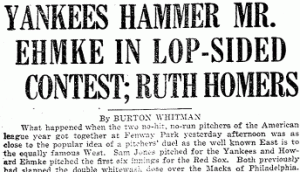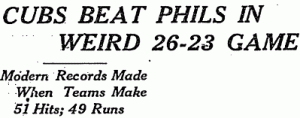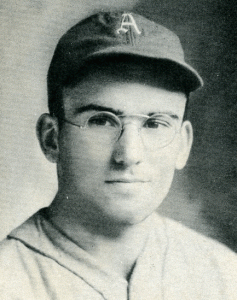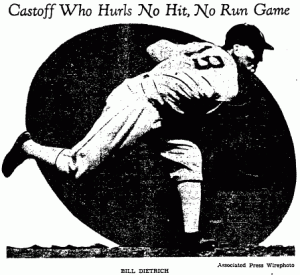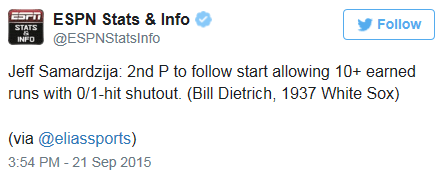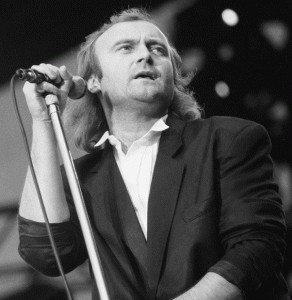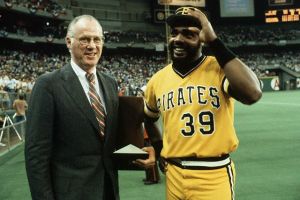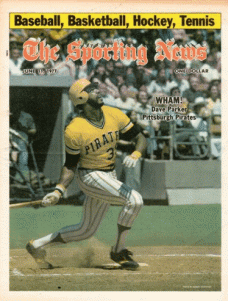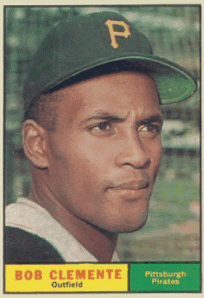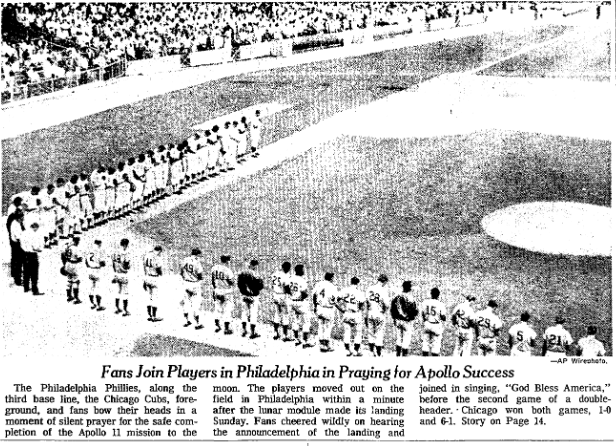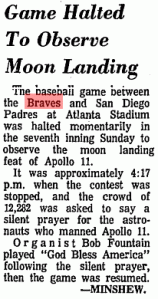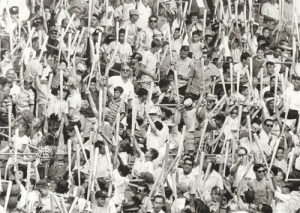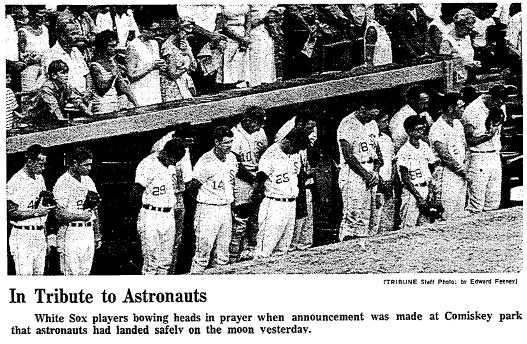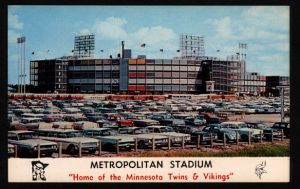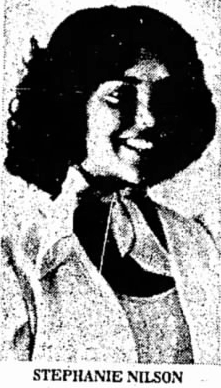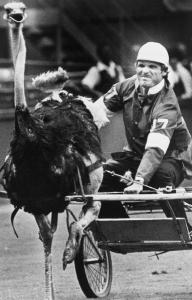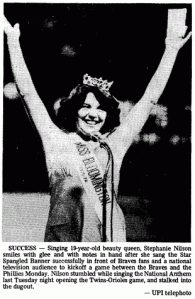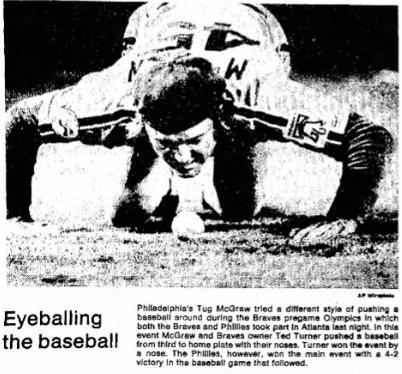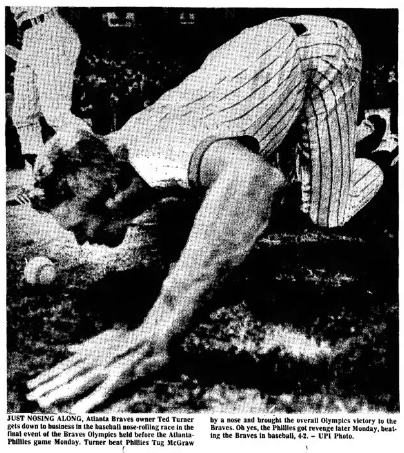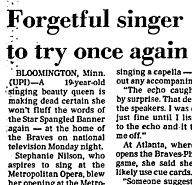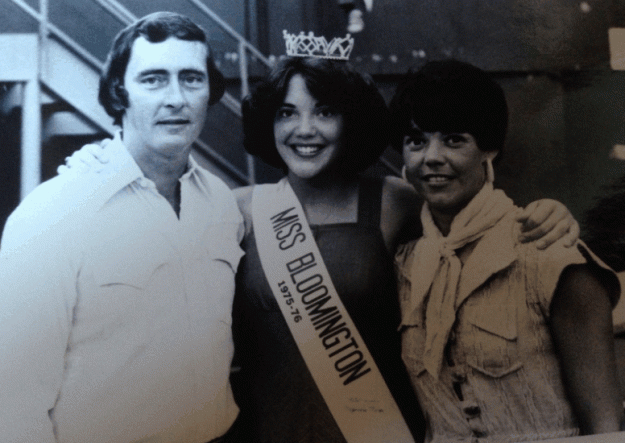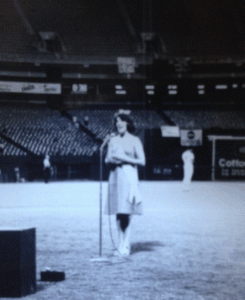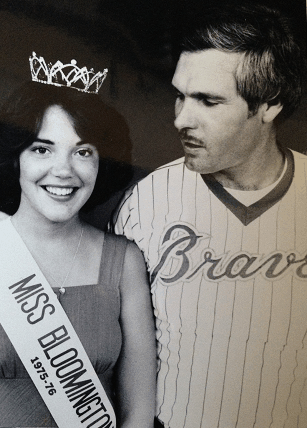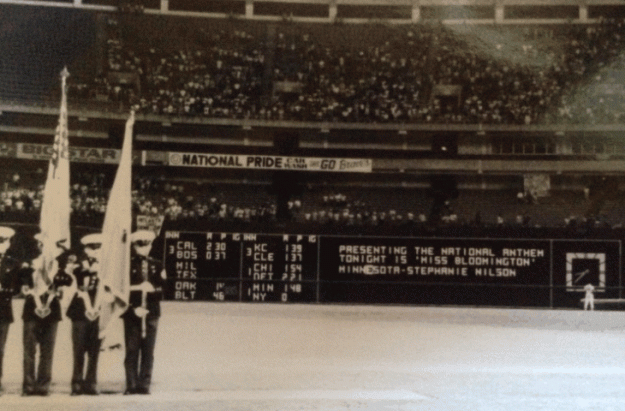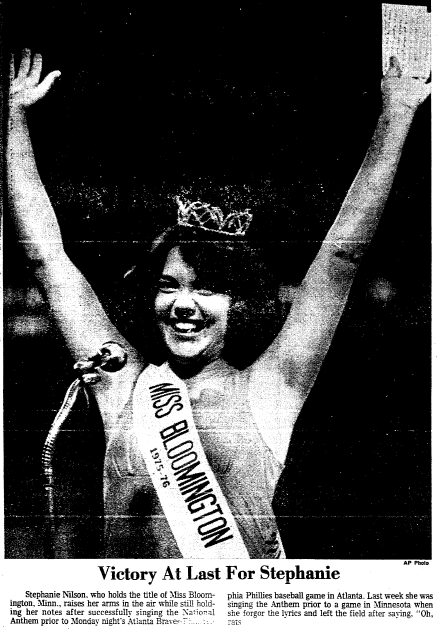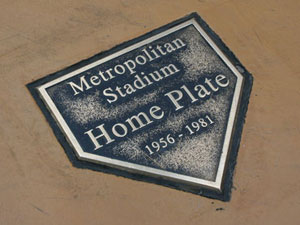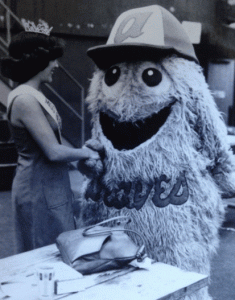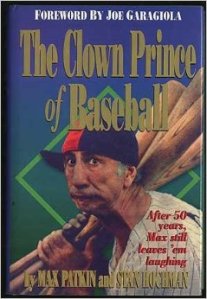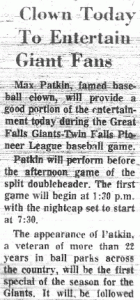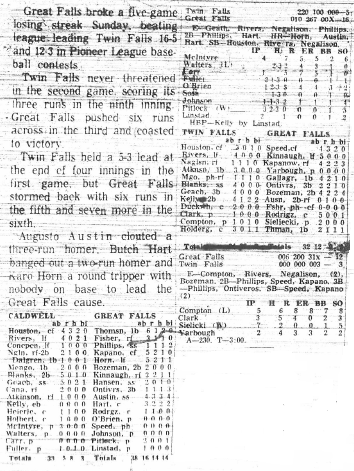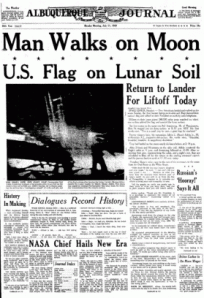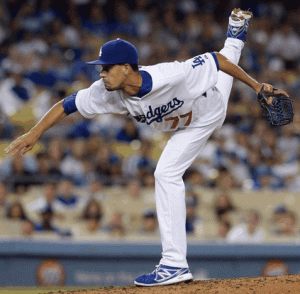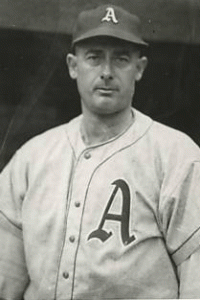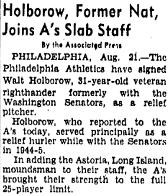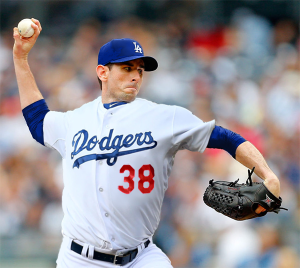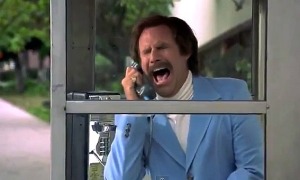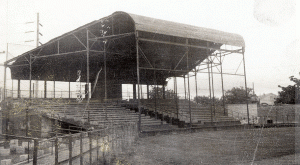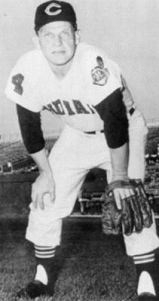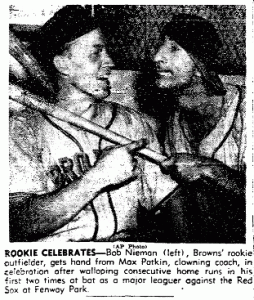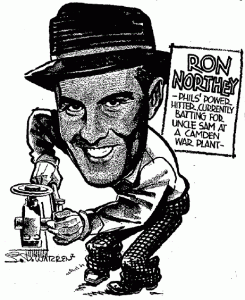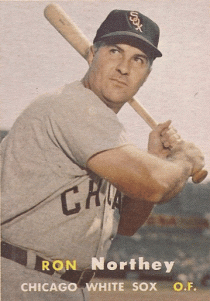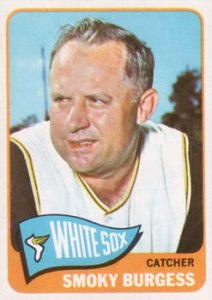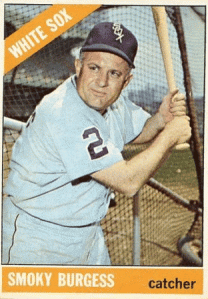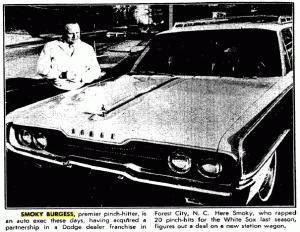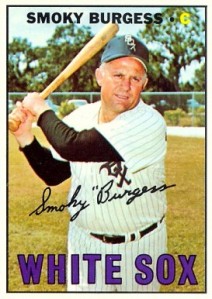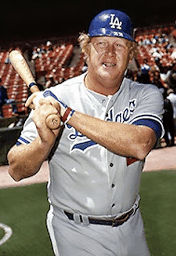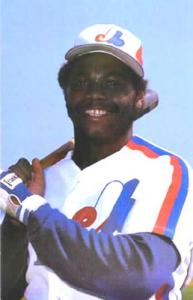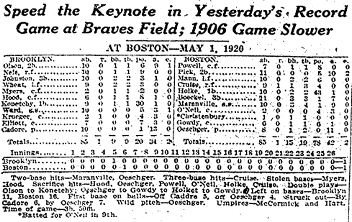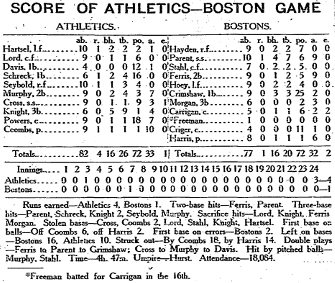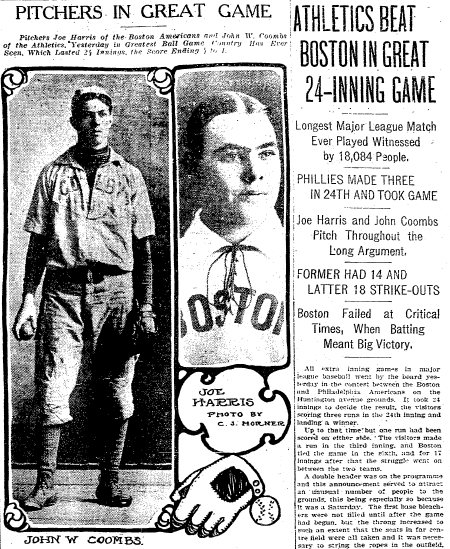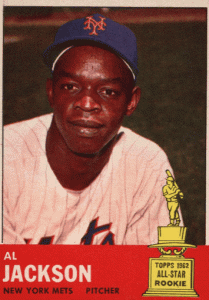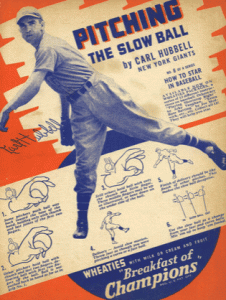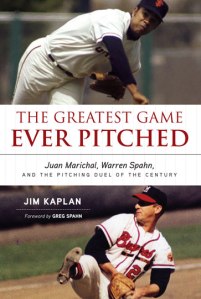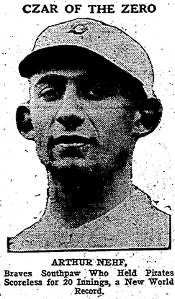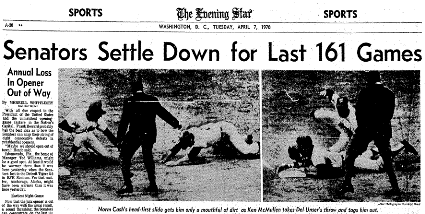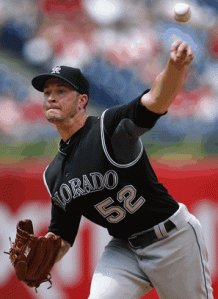
I can never remember whether Jekyll or Hyde was the good one, but Chris Rusin was both in a six-day period.
On August 16, 2015, Colorado Rockies lefthander Chris Rusin shut out the Padres on five hits, a feat made even more impressive by the fact that it came in the hitters’ paradise of Denver’s Coors Field. Six days later Rusin returned to the mound at Coors Field to face the Mets and was pulled from the game before he could retire a batter in the third inning, allowing 11 runs. The contrasting results led me to wonder three things:
- What’s the greatest difference in runs allowed between consecutive starts by a pitcher?
- What’s the most runs a pitcher has allowed in his next start following a shutout?
- What’s the greatest difference in “game scores” between consecutive starts by a pitcher? (“Game score” was developed by Bill James in an effort to roughly rate the quality of a starting pitcher’s performance; I’ve written more about it here. Rusin went from a score of 80 in his shutout to -11 in his follow-up, for a difference of 91.)
If I had some ability to manipulate the data accumulated by the volunteers at Retrosheet, I might be able to definitively answer questions 1 and 2, at least for the years in their database. Retrosheet doesn’t list game scores, but Baseball-Reference.com does; alas I can’t figure out a way to use their spectacular Play Index tool to answer question 3.
So I’m not likely to come up with the definitive answers to these questions in this post. But I have determined Rusin does not hold any of the records in question.
For assistance, I posed these queries to my fellow members of the Society for American Baseball Research, and I got a response from Gerry Myerson, who brought up a pitcher who topped Rusin on one of those categories: Tom Sheehan.
 Sheehan reached the major leagues in July 1915 when the Philadelphia A’s purchased him from a minor league team in Peoria. The A’s had won the American League pennant in four of the previous five seasons, but after their 1914 World Series loss to the Braves, A’s owner/manager Connie Mack said goodbye, in one way or another, to stars Eddie Collins, Home Run Baker, Eddie Plank, Chief Bender and Jack Coombs; other stars would be waived or sold during the 1915 season, and the A’s ended the year with a dismal 43-109 record. The 21-year-old Sheehan provided a brief ray of sunshine, winning his first three starts, but then the wheels came off and he lost eight of his last nine starts. (The misery continued in 1916, when Sheehan posted a 1-16 record — including an 0-14 record as a starter — for an A’s team that somehow managed to be even worse than it was in 1915, going 36-117.)
Sheehan reached the major leagues in July 1915 when the Philadelphia A’s purchased him from a minor league team in Peoria. The A’s had won the American League pennant in four of the previous five seasons, but after their 1914 World Series loss to the Braves, A’s owner/manager Connie Mack said goodbye, in one way or another, to stars Eddie Collins, Home Run Baker, Eddie Plank, Chief Bender and Jack Coombs; other stars would be waived or sold during the 1915 season, and the A’s ended the year with a dismal 43-109 record. The 21-year-old Sheehan provided a brief ray of sunshine, winning his first three starts, but then the wheels came off and he lost eight of his last nine starts. (The misery continued in 1916, when Sheehan posted a 1-16 record — including an 0-14 record as a starter — for an A’s team that somehow managed to be even worse than it was in 1915, going 36-117.)
In his next-to-last start in 1915, Sheehan allowed four runs in eight innings in a loss to the Tigers. (The A’s took the lead after Sheehan was removed for a pinch-hitter in the eighth and his successor on the mound allowed the winning run; under modern scoring rules Sheehan would not have been designated the losing pitcher, but he was then.) Six days later, in his next start (and last of the season), manager Mack left Sheehan in to absorb a 20-5 loss at the hands of Washington in the second game of a doubleheader. This was during the deadball era; the Senators averaged less than 3.6 runs in their other games that season. Sheehan faced 52 batters in pitching the complete game (played in just 1 hour 50 minutes), and it could have been worse, except the Senators were the home team and didn’t bat in the ninth.
The game was described in the next day’s Philadelphia Inquirer as:
…the real farce, not only of the day, but of the season. It might not be too much to characterize it as one of the real jokes of all professional baseball history hereabouts. Sheehan was hit hard, but it was the weird fieldling behind him that was responsible for more than half of the bingles that will go to fatten the records of the Nationals…Mack’s fielders, including several who have seen service in world’s championship classics, played in a half-hearted manner typical of a team that is a hopeless last, with nothing to gain in battle, one way or the other. They ran circles around fly balls, stepped on their own feet in going after grounders, and never exerted themselves on the base paths.
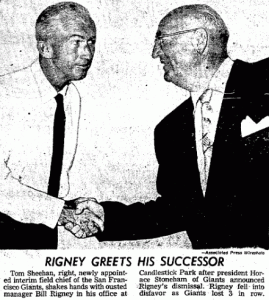
Tom Sheehan pitched until he was 40 and stayed in the game as a minor league manager and scout. At age 66 he replaced Bill Rigney as manager of the San Francisco Giants on June 18, 1960, and he stayed in baseball until he was 84.
The official box score that appears on Retrosheet shows the A’s with eight errors and the Nats with 23 hits, but the box scores that appeared in the Inquirer and the Washington Evening Star listed the A’s with TEN errors and Washington with 21 hits (apparently errors credited to left fielder Wally Schang and shortstop Larry Kopf were actually hits for Carl Sawyer and Horace Milan; Schang and Kopf finished with two errors each anyway, and catcher Cy Perkins had three).
So with a difference of 16 runs allowed between consecutive starts, Sheehan becomes the leader that I know of in the category. But he doesn’t pass Rusin in question 3, as the difference in his game scores was “just” 82 (from 53 to -29).
Is Sheehan’s 16 a record? We can use Play Index to check back to 1914…and it turns out only 10 pitchers have allowed 16 runs in a start in that period.
| Player | Date | Tm | Opp | Rslt | IP | H | R | ER | BB | SO |
|---|---|---|---|---|---|---|---|---|---|---|
| George LeClair | 1914-08-16 | PBS | IND | L 6-21 | 8.0 | 24 | 21 | 20 | 8 | 0 |
| Tom Sheehan | 1915-09-29 (2) | PHA | WSH | L 5-20 | 8.0 | 23 | 20 | 12 | 4 | 3 |
| Hod Lisenbee | 1936-09-11 | PHA | CHW | L 2-17 | 8.0 | 26 | 17 | 14 | 4 | 1 |
| Howard Ehmke | 1923-09-28 | BOS | NYY | L 4-24 | 6.0 | 21 | 17 | 16 | 4 | 6 |
| Chubby Dean | 1940-09-28 (1) | PHA | BOS | L 4-16 | 8.0 | 19 | 16 | 14 | 5 | 1 |
| Flint Rhem | 1933-08-04 | PHI | NYG | L 1-18 | 8.0 | 21 | 16 | 15 | 3 | 1 |
| Hugh McQuillan | 1927-09-11 (2) | BSN | CIN | L 5-16 | 6.2 | 17 | 16 | 15 | 3 | 2 |
| Ted Lyons | 1924-07-21 | CHW | WSH | L 2-16 | 8.0 | 18 | 16 | 14 | 5 | 3 |
| Jimmy Ring | 1922-08-25 | PHI | CHC | L 23-26 | 3.1 | 12 | 16 | 6 | 5 | 2 |
| Elmer Myers | 1917-08-21 | PHA | CLE | L 3-16 | 8.0 | 21 | 16 | 13 | 4 | 1 |
Now it’s just a matter of going through the game logs of those pitchers to see what they did in the starts before and after.
(The 20th Century record for most runs allowed by a starting pitcher predates the Play Index database…Al Travers, later a Jesuit priest, gave up 24 runs to the A’s when he was called off the Philadelphia sandlots to pitch for the Tigers in 1912 after the entire Tiger team went on strike. Gary Livacari tells the story here. Travers never played another major league game.)
If the team designation PBS doesn’t ring a bell next to George LeClair, that’s because it’s the Pittsburgh Stogies (also known as the Rebels) of the Federal League, which was recognized as a third major league in 1914 and ’15. The day after LeClair was pounded for 21 runs in his second major league start (he had pitched in a Class C league in 1913), the Pittsburgh Press reported, “Manager [Rebel] Oakes did not have a chance to take Leclair out of the box for the reason that he had no one to relieve him and the Canadian boy had to stay in and take his punishment.” Oakes must have been desperate, as he let LeClair pitch a complete game even though he had used him to pitch the ninth inning the previous day.
Aside from this game, LeClair was quite effective in 1914; in his other 21 appearances his ERA was 2.45 (this one blowout left his season ERA at 4.01!). In his start prior to the 21-run game he allowed three runs in seven innings, and in his next start he gave up three runs in a nine-inning complete game, although that was more than a month later, after several relief appearances. So going in either direction he had a difference of 18 runs allowed between consecutive starts, even more than Sheehan, although Sheehan did not have intervening relief appearances.
LeClair’s game score in his 21-run game was -56, the lowest in the post-1914 database. On October 6 he allowed just one run in 10 innings in a game against Baltimore and had a game score of 80. It looks like the difference of 136 between his highest and lowest game scores of the season is the greatest of anyone; Joe Oeschger had a difference of 131 between his 26-inning game in 1920 (a game score of 153, the highest ever) and a game on August 27 that year that scored a 22.
Hod Lisenbee was another pitcher who was left in by Connie Mack to absorb a pounding, giving up a post-1901 record 26 hits to the White Sox while allowing 17 runs. He came back four days later and gave up eight runs in 4-1/3 innings; in his previous start he had allowed five runs in five innings.
Howard Ehmke was a 20-game winner for the last-place 1923 Red Sox, but he lost both his starts after winning his 20th. On September 24 he gave up six runs to the Browns, then the Yankees clubbed him for 17 runs in just six innings — 11 of them in his final inning of work — in his last start September 28. “Howard is immense when he’s good,” Burton Whitman wrote in the next day’s Boston Herald, “but something else again when he’s bad.” 20-year-old Lou Gehrig had three doubles and a single for the Yankees, driving in four runs, in just his second major league start. Earlier in September Ehmke had pitched a no-hitter against the A’s followed four days later by a one-hitter against the Yankees. He had five hits of his own in the two games while allowing just one! (I learned that tidbit from the splendid researcher Tom Ruane, who included it in one of his fascinating “retro-reviews” on Retrosheet.org.)
Chubby Dean — yet another pitcher Connie Mack allowed to be treated like a piñata! He allowed 16 runs in his last start of the 1940 season, and in his previous appearance nine days earlier he gave up 13 runs in a complete game. Is Dean the only pitcher in history to give up double-digit runs in consecutive starts? (Wait, I found another one…Pat Caraway, who led the American League with 24 losses for the 1931 White Sox, gave up 11 runs in 4-2/3 innings on July 23 and came back three days later to allow 13 runs in just two innings. That’s the shortest outing for any pitcher who’s given up 13 runs, starter or relief, at least since 1914. And wait…Bill Sherdel did it THREE starts in a row in 1929, giving up 10 runs on June 29, 13 runs on July 3 and 10 runs on July 6.)
Chubby wasn’t even Mr. Mack’s favorite whipping boy in 1940…George Caster, who led the league in losses with 19, pitched complete games in which he allowed 14 and 10 runs, and gave up 10 runs in just four innings in another game. He had two complete games in which he allowed nine runs and two other appearances in which he allowed nine. (And yet one of his four wins was a complete game in which he beat the eventual pennant winners, Detroit, 3-1. Go figure.) Buck Ross and Porter Vaughan also had complete games in which they allowed 11 and 10 runs, respectively.
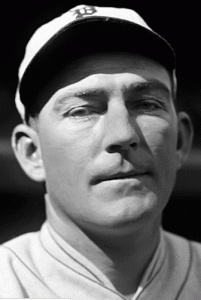
Flint Rhem’s 14 losses for the 1933 Phillies were a career high. He had a 105-97 record over 12 seasons.
Flint Rhem…here’s a man with a bigger difference in consecutive-start game scores than Chris Rusin! On July 30, 1933, he went the distance for the Phillies in defeating the Dodgers, 3-1, at Ebbets Field. Five days later he pitched the first eight innings against the Giants, allowing 16 runs, in a game the Phils lost 18-1. Nine of the runs against Rhem came in his last inning on the mound, which included a bases-loaded triple by Giants pitcher Carl Hubbell, the last of two triples the Hall of Famer hit in his 16-year major league career. Perhaps Rhem was unsettled by an incident that was cryptically reported in the next day’s New York Times: “Umpire Dolly Stark found fault with Rhem’s stance on the hill in the third [inning] and made him correct it.”
At any rate, Rhem went from a game score of 70 on July 30 to a -24 on August 4, a difference of 94. That’s better than Chris Rusin. But is it the biggest difference between consecutive starts ever? Ah, again we turn to the 26-inning man Joe Oeschger, who followed up his 153 with a 32 in his next start (12 days later, after his arm recovered) for a difference of 121.
There have been only 13 games since 1914 in which a pitcher allowed 16 or more runs, and Rhem pitched in two of them. While pitching for the Cardinals Rhem gave up eight runs before being knocked out in the first inning of a game on June 22, 1925; he was relieved by Johnny Stuart, who went the rest of the way and allowed the Pirates to score 16 more runs, making him one of only three pitchers in the post-1914 database to allow 16 runs in a relief appearance.
Hugh McQuillan‘s pounding came in the last game of his major league career. In his previous start he had lasted just three innings and allowed four runs. But in the start before that, on August 30, he pitched an 11-inning four-hitter against the Reds, winning 2-1. His game score in that game was 83, 106 points better than the -23 he posted in allowing 16 runs less than two weeks later.
Ted Lyons is the only Hall of Fame pitcher who ever gave up 16 runs in a start. In his previous start he had allowed six. His next start wouldn’t come until more than a month (and nine relief appearances) later, and he gave up nine runs in that one, although he won.
Jimmy Ring had the shortest pitching appearance of any starter who allowed at least 16 runs, as he was knocked out in the fourth inning of what went on to be the highest-scoring game in major league history, a 26-23 win by the Cubs over the Phillies on August 25, 1922 in Chicago. The Cubs led 25-6 after four innings before the visitors rallied to actually put the tying run on base in the ninth. Sixteen of the 28 batters Ring faced scored! But only six of those runs were earned, thanks to two errors in the Cubs’ 10-run second inning. Ring is one of only nine pitchers in the post-1914 database to give up at least 10 unearned runs in a game.
In the starts both immediately before and immediately after Ring’s pounding, he allowed just three runs. But two starts before his debacle in Chicago, Ring yielded 14 runs in a loss to the Pirates. That makes him the only pitcher, at least in the post-1914 database, to give up at least 14 runs twice in a season. (Only two other pitchers gave up 14 runs in a game twice over the course of their careers: Milt Watson — yet another victim of Connie Mack’s willingness to watch his pitchers get lit up, the only pitcher aside from Ring to give up at least 14 runs twice as a starter — and Carl Doyle, who didn’t pitch even five innings in either of his games, one of which was in relief.)
The last pitcher on the list is yet another Mack managee, Elmer Myers, who was a teammate of Tom Sheehan’s on those pathetic 1916 A’s. Myers’ disaster came in 1917, two days after a start in which he allowed five runs in one inning (and he pitched in relief on the day between that start and his 16-run shredding). In his next start he was roughed up for nine runs.
Okay, so we seem to have the answer to who had the biggest difference in runs allowed between consecutive starts…or answers, either George LeClair (18) or, if you don’t like the Federal League or don’t like relief appearances between starts, Tom Sheehan (16). And we’ve found Joe Oeschger (121) has the biggest difference between game scores in consecutive starts.
Still up for grabs is whether the 11 runs Chris Rusin gave up in his next start after a shutout is a record. Play Index shows 394 times, going back to 1914, that a starting pitcher game up 11 runs or more. I looked at all those pitchers, checked to see if they threw a shutout in the same season, and then checked their game logs for the year to see if they had their rotten game right after a shutout.
And believe it or not, there was a pitcher who outdid Rusin. And guess what? It was another one of Connie Mack’s pitchers!
Bill Dietrich, who began wearing glasses at the age of eight, won just two of his first 12 starts for the last-place 1935 A’s. After a particularly rough outing on July 20 in which he gave up seven runs and got knocked out in the first inning, Mack sent him to the bullpen for a couple weeks, but when he moved back into the rotation Dietrich continued to struggle. He gave up 11 runs on August 6, seven runs on August 10 and seven runs again on August 19. (Of course, pitching for Mack, he went the distance in all three games.) There was no reason to expect anything better when Dietrich took the mound in Cleveland on August 22. James Isaminger described what happened next in The Sporting News issue of August 29:
Dietrich has had a very bad year, both as starting and relief pitcher [he went into the Cleveland game with a 5-10 season record and a 5.29 ERA], and Mack had about given up on him. But on August 22, he stepped out in Cleveland to blank the Indians with six hits. The slightest wavering on his part would have been fatal, for only one run was scored in this game. The A’s made it in the second inning…
Dietrich not only won the headlines that game but he also won a costly electric refrigerator. There was a convention of electric ice box men in Cleveland during the series and that afternoon the convention men promised their best ice box to the winning pitcher and Bill grabbed it.
Alas, the shutout was not the start of a hot streak for Dietrich. Four days later he pitched his fifth straight complete game…but he allowed 13 runs (on 17 hits and eight walks) to the Tigers, in just eight innings. And at least back to 1914, that’s the most runs any pitcher has allowed in his next start after a shutout. Dietrich’s game scores went from 78 to -7, a difference of 85.
Get this: two days after Dietrich was lit up for 13 runs (and pitched eight innings), still in Detroit, Mack brought him back to pitch seven innings in relief — and he gave up eight runs. Dietrich made just one more start the rest of the season, and Mack mercifully pulled him after he gave up seven runs in four innings.
Oddly enough, Dietrich had a completely opposite reversal of fortune two years later. He changed teams twice in 1936, going to the Senators on waivers in July after he got off to a horrible start and then going to the White Sox on waivers just three weeks later after he had fared even worse for Washington. In his second start of 1937 he was roughed up for 10 runs and knocked out in the fourth inning, leaving him with a season ERA of 10.12. Three days later he came back and pitched a no-hitter against the Browns (his game scores went from 0 to 90; research project for another time — was that the worst performance ever in the start before a no-hitter?). (ADDED 9/21/15: The answer is yes…I have details here.)
Dietrich wound up spending 16 years in the majors, pitching his last game at age 38, and finished with 108 wins and 128 losses. He pitched for the White Sox through World War II; I don’t know whether it was his eyesight that kept him out of the military or what. According to his 1978 obituary in The Sporting News, Dietrich’s “temper occasionally got him into trouble.” If they mention your temper in your obituary, you clearly had some kind of reputation.
ADDED 9/21/15: Jeff Samardzija had a Dietrich-like reversal in 2015…after giving up 10 runs in just three innings on September 15, he pitched a one-hit shutout, facing just 28 batters, on September 21. His game scores went from -3 to 91, an even bigger jump than Dietrich.
A few other pitchers caught my eye in my search…George Blaeholder pitched three shutouts for the last-place 1933 St. Louis Browns, including an 11-inning gem. He also gave up 11 runs or more twice. Neither came after a shutout, but both came after a good performance. He gave up just one run in a complete-game win over the White Sox on June 12, then six days later got torched for 14 runs by the eventual pennant winners, Washington. On July 9 he beat the Red Sox 9-2, and the Yankees blew him up for 11 runs five days later….Phillies’ hurler Phil Collins had a similar reversal of fortune in 1931 when he beat the Cardinals 2-1 on May 11, then coughed up 14 runs against the Cubs five days later….Tom Seaton pitched seven shutouts among his 25 wins for Brooklyn in the 1914 Federal League but also had starts in which he allowed 13 and 12 runs.
